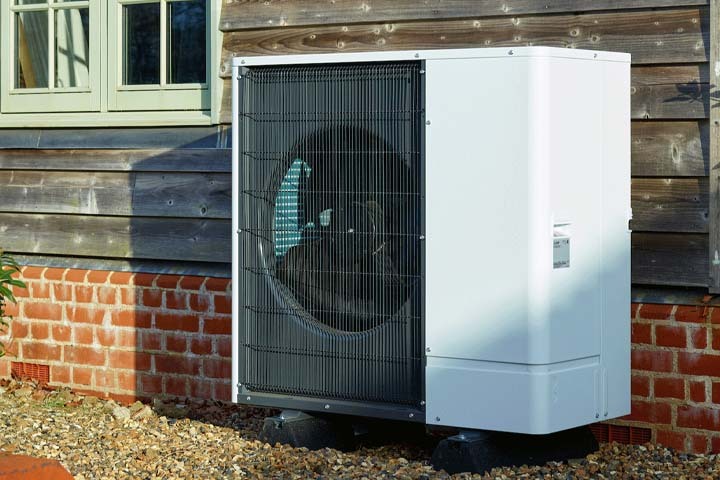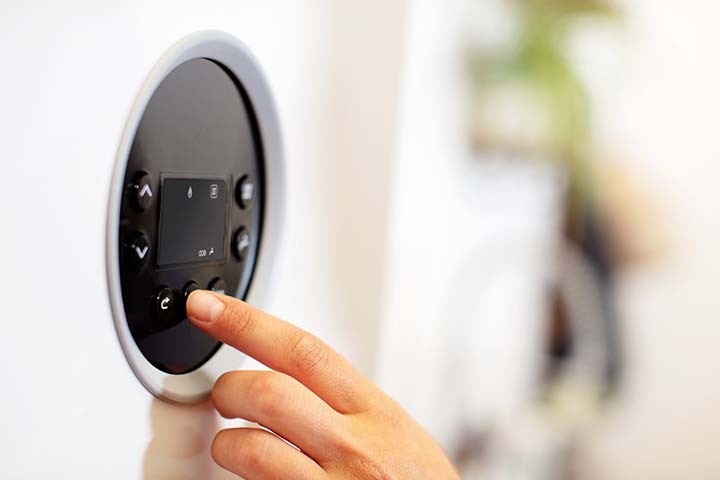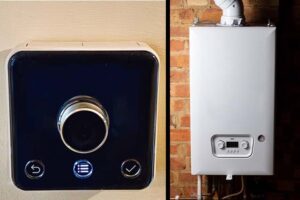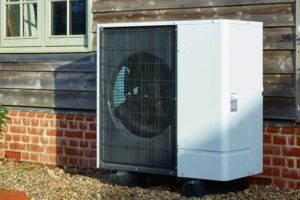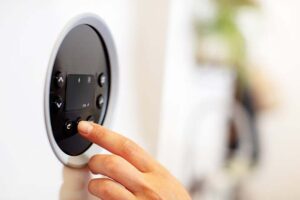Table of Contents
Currently the world is getting more aware about climate change and is conscious of the future of the planet. There is a technology gaining prominence currently is the air source heat pump. This innovative and renewable energy system makes use of ambient air and provides heating and cooling to a home. The technology offers a blend of efficiency and sustainability for the environmentally aware customer. However, like all technology, it is sure to carry with itself its package of opportunities and drawbacks. Here in this article, we’d talk about what makes an air heat pump such an attractive choice for homeowners looking into renewable energy options.
It also deals with some of the advantages and disadvantages of air source heat pumps you need to keep an eye on before making any decision. Let’s explore how air-source heat pump systems will be the future of home heating solutions!
Overview of Air Source Heat Pumps
ASHPs are now highly in demand because, as seen above, they are an environmentally-friendly source of warmth and energy efficiency. This is because ASHPs take the warmth from outside air, even on a very cold day, creating more of a sustainable heating solution than other existing heating systems.
The positive points of ASHPs are; they remarkably decrease the energy consumption, resulting in low energy bills, besides reducing dependency on fossil fuels. The maintenance requirements are low and they work efficiently throughout the year for both heating and cooling needs.
However, there are also some drawbacks to it. The installation costs may be more expensive at first than a traditional heating system. Moreover, their performance may decrease when temperatures are at extreme, so that may result in supplementary heating sources.
This information will help understand the pros and cons of this renewable heating technology, which is critical in deciding a heat pump for your next home heating solution.
Why Will Air Source Heat Pumps Become Necessity in the Future?
In the light of growing concern about climate change, this issue of sustainable energy has been looming larger; and in this respect, ASHPs provide an immediately viable option with respect to carbon footprint reductions and added heating and cooling efficiency. Thus, ASHPs precisely fit into the agendas of governments that call for greater adoption of renewable energy.
The fact that they can tap into the ambient air makes them ideal for domestic and commercial use. Escalating the cost of fuel further brings the necessity to switch over alternative systems such as ASHPs into power. The units may thus shift reliance from traditional heating solutions considerably for considerable environmental advantage and saving over the long term.
They become even more irresistible with technological advancement continuing to make them more efficient. In this pursuit of getting close to net-zero emission targets, air to water heat pumps can certainly find a prominent place in the energy horizon.
How Air Source Heat Pumps Offer Renewable Energy
Air source heat pumps seek energy from the copious amounts available in the air surrounding us. It takes warmth from outdoor air, and even if it is very cold, it conveys that warmth indoors. In such a manner, homes can make use of a clean resource without putting in any effort.
Since ASHPs do not burn fossil fuels, heating systems, they work on electricity. Still, they work very proficiently, producing over and above what they consume, making them minimise carbon footprint and their ecological footprint.

Again, in the case of ASHPs, several nations are crisscrossed with a significant dependence on renewable energy sources, using natural atmospheric conditions for heating and cooling. More households appreciate the integration of renewable technology such as ASHPs into their living spaces.
The future of heating is no longer about comfort but the choice of cleaner energy options for individuals and the planet.
Advantages of Air Source Heat Pump
Its great significance advantage ASHP offers is about energy efficiency. A heat pump will provide up to three times more heat than it consumes, thereby saving less in utility bills. These units are multi-faceted and can be used to both cool and heat a space. Thus, ASHPs are also the practical solution for all four seasons as it comfortably adjusts with any seasonal changes.
In addition, air source heat pumps thus minimise carbon footprints since they use renewable sources of energy. They extract warmth from outside the house as few greenhouse emissions are produced compared to the usual heating techniques.
Installation is also relatively easy. Compared to ground source, which involves massive excavation, it is no problem for ASHPs since installation would not extensively affect the site. Thus, installation becomes feasible even in urban areas when space may be a bit tight.
Disadvantages of Air Source Heat Pump
ASHPs also have some notable disadvantages that potential users should consider. One of the significant disadvantages is their ability in extremely low temperatures. They can work satisfactorily at some relatively moderate temperatures, but when the mercury drops even lower, their performance drops significantly. Noise levels could be a problem for some homeowners. Being a significant noise source, the outdoor unit may disturb nearby neighbours or adversely affect the peaceful environment of your house. The Cost of installation is another disadvantage. Although ASHPs prove economical for the running period, the installation cost might scare away budget-aversive customers.
Also, not all properties will support the fitting of an ASHP. Space limitations and specific site conditions may eliminate possibilities for some dwellings. While ASHPs use renewable resources, they do still need electricity to be used effectively; and if it were local grid power that was supplied from nonrenewable sources, there are inevitably slightly diminished environmental advantages.
Advantages and Disadvantages of ASHP Functionality
Advantages | Disadvantages |
Energy Efficiency They can provide as much as three times the amount of energy used, therefore saving a lot on energy bills.. | High Initial Cost Installation costs are generally very high as compared to the conventional heating units. |
Low Carbon Emissions They aid in combating carbon footprints because they utilise renewable sources of energy. | Temperature Sensitivity The efficiency may be largely affected when the temperatures are extremely low, and supplemental heating may be indispensable. |
Versatile Installation They can be installed almost everywhere including both old and new buildings. | Noise Levels Some models could be noisy and therefore create problems in silent residential locations. |
Government Incentives Eligibility to grant and subsidies could reduce the installation costs. | Space Requirements Outdoor space would be needed for the installation of the air heat pump unit, and that would be impossible for all the property. |
Heating and Cooling Functionality It is used for heating in winters and cooling in summers; it provides all-round the year comfort. | Potential for Lower Efficiency in Very Cold Climates In highly severe climatic conditions, this could possibly have the potential to deliver relatively lower efficiency. |
Minimal Maintenance Usually requires low maintenance compared to a conventional boiler. | Installation Complexity Installation is not complex, but it requires professional setups. |
Air Source Heat Pumps with Solar Panels
A combination of ASHPs with solar panels would form an excellent powerful combination for sustainable energy. Their use in unison maximises efficiency while significantly reducing carbon footprints. Solar panels are designed to capture sunlight and convert the energy into electricity. The power generated by solar panels can be fed to the ASHP to heat or cool your home. This comes with reduced energy consumption since the dependence on fossil fuels would be decreased. Both of these systems together facilitate increased energy independence. Homeowners will be less exposed to price volatility in energy and disruptions to supply.
This aspect, during sunny days when cooling demand is at a higher level, the power generated by solar panels may be used to meet these demands directly with the ASHP. This integration provides maximum comfort while meeting environmental responsibility. Investment in this combination will not only go to green initiatives but probably enhance property value as more people seek more environmentally friendly homes and efficient heating systems.
ASHPs Combine Heating and Cooling Systems
ASHPs are highly versatile appliances. They can heat and cool your home at the same time. The versatility enabled by this duality makes them very popular among the target consumers. In winter, ASHP extracts warmth from the outside air for delivery inside. Even at very low ambient temperatures, they will draw warmth from their surroundings.
However, this can work in the reverse direction, especially on hot summer days. When cooling is required, the heat will be removed out of your house and expelled outside. This integration provides an optimal comfort enhancement while it uses energy efficiently throughout the year.
Having one system for both heating and cooling, you’ll save on installation and still enjoy controlled climate all through the seasons. The convenience is unbeatable; one system alone makes the maintenance process much easier as well.
ASHPs Will Save Costs on Fossil Fuels
One of the primary strengths of ASHPs is that they are an economical alternative versus fossil fuel heating systems. They take their energy from ambient air, thus greatly reducing dependence on gas or oil. Electric power, sourced and generated most often from renewable energies, may reduce utility bills drastically. In such a volatile world of fossil fuel, stable prices of ASHPs are very attractive.
Government incentives, accompanied by grants, make it more cost-effective for individuals to switch to these systems. Considering the growing levels of awareness with regard to climate change and the increasing number of homeowners seeking a more environmentally friendly solution that will ultimately save them money, it is simpler than ever.
ASHPs are more effective because they produce more heat than the other traditional heating options per unit of energy used. This, consequently, leads to less spending in general while also minimising the quantity of carbon produced simultaneously.
Less Maintenance Requirement and User-Friendly
Air source heat pumps are convenient for the user. As soon as they are installed, they require little or no interaction at all. This makes them very attractive to busy homeowners. Routine maintenance is simple and usually restricted to checking filters and clearing obstructions from the outdoor unit. This contrasts ASHPs with more old-fashioned heating systems that require servicing. ASHPs have fewer moving parts, and this of course means less wear and tear.
Smart technology makes the interfaces user-friendly, making it easy for homeowners to easily adjust settings or monitor energy use. In fact, most of the units can be controlled remotely with mobile apps.
This simplicity means you will feel comfortable with no constant attention or hassle. With this modern technology, embracing it is a smooth way to keep your home’s climate while keeping routine tasks at bay.
Air Source Heat Pump Installation
Installation of an ASHP can revolutionise the efficiency of heating and cooling in your home. The process typically commences with a site surveying to identify an ideal location with good airflow, free from obstructions, then install and mount the outdoor unit. Meanwhile, it should be positioned at a distance from noise-sensitive areas but accessible enough for ease of maintenance.
The indoor devices are then connected. This mostly involves passing the refrigerant lines through the walls. Insulation of these lines ensures maximum energy efficiency. Many homeowners appreciate that, in general, ASHP installation can be less invasive than traditional systems.
After all of these are in place, the technicians would test it all thoroughly before allowing you to take control of the system. Coupled with the user-friendly interfaces being incorporated into more modern models, you’ll find your ASHP operating easily immediately after the installation is complete.
Air Source Heat Pump Cost
Listed below is the estimated criterion of air source heat pump UK;
Cost Category | Estimated Cost Range |
Unit Purchase Price | £6,000 – £12,000 |
Installation Costs | £1,500 – £3,500 |
Total Initial Cost (Unit + Installation) | £7,500 – £15,500 |
Annual Running Costs | £400 – £800 |
Maintenance Costs (Annual) | £100 – £300 |
Potential Government Grants/Incentives | Up to £5,000 |
Average Payback Period | 5 – 10 years |
Air Source Heat Pump Grants Under ECO4 Scheme
Probably the most important scheme is ECO4 because it facilitates improvement of the energy efficiency in buildings derived from different types of homes in the UK. In this scheme, households can submit applications for install grants specifically to access air source heat pumps (ASHPs).
Heat pump government grants decrease the initial costs and make renewable heating technology more affordable. The government encourages increased usage of ASHPs in order to encourage a cleaner use of energy and reduce carbon footprints.
Eligibility is often based on the level of income of the residence, the type of property, and other such criterions. Those who are eligible for a heat pump grant will find their local authorities or energy providers in possession of such grants.
Besides facilitating it to become more feasible to shift toward an ASHP, money help is also contributing to national climate goals. Thus, this becomes a perfect win-win situation, where individual household consumers benefit, as well as advances being made toward the broader environmental cause.
Key Takeaways
ASHPs, however, are gaining acceptance for both heating and cooling purposes. Its wider benefits lie in its energy efficiency and less dependence on fossil fuels. The need is now gaining momentum with a growing concern over climate change, and the transition towards a renewable energy source is happening at an ever-accelerating pace. Although there are some drawbacks to be taken into account, such as low performance in extreme cold temperatures and the initial price for installation, both can typically be overcome with proper planning and by advancements in technology. Moreover, they work very well with solar panels for an even more sustainable future.
Once consumer education is made aware of the balanced advantages and disadvantages, they will be able to make informed decisions based on their needs and values toward heating solutions well into the future.
Frequently Asked Question
Some of the primary advantages of an air-to-air heat pump include, saving energy and reducing electricity expenses. They also help in reducing carbon emission and environmental impacts. The dual functionality of ASHPs both heating and cooling made them a preferred choice for many homeowners in the UK.
Whether an ASHP is good for your house or not largely depends on several factors, such as the local climate, size of a home, and heating and hot water needs. Generally, an ASHP can be an excellent choice to generate heat and hot water if you live in a moderate climate and your house is a well-insulated one.
Modern air source heat pumps should not make any more than a faint whir if they are working correctly. As with all things that make any noise at all, though, the amount of noise again will depend on how much work the heat pump is doing at any one time – in other words, the greater the workload, the louder the heat pump will be.



